Do your hips hurt while riding the bike? One of the things that helped me get rid of my hip pain while cycling was correcting the seat and handlebar position of my peloton bike.
However, I also noticed that apart from my bike setup, there are other lifestyle factors that contribute to, and can aggregate my hip discomfort.
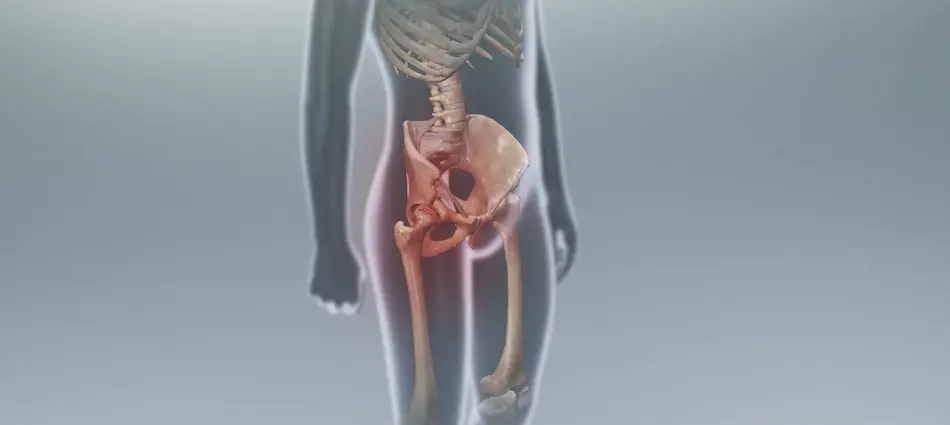
Can peloton cause hip pain?
One thing I learned from my experience is that riding the peloton bike without proper setup can cause hip, knee, and lower back pain.
Plus, using the bike without sufficient warm-up, cooldown, or active mobility stretching exercises can increase muscle tension, and aggregate the pain.
On the contrary, the peloton wasn’t hurting my hips, as long as my seat and handlebar were correctly measured and I wasn’t burning myself out with high training load and intensity throughout the week.
My experience with hip pain during peloton classes
I’ve been battling with hip pain for over 10 years since I had a hip replacement in 2010 after my early days of playing rugby.
I still remember the pain that impaired simple movements like sitting or standing, which immediately took out the joy of daily activities.
Since I got a peloton bike, the pain was almost gone. However, it wasn’t always like that.
During the first few months on my bike, my pain was getting worse, not better.
- I had to spend at least 15 minutes doing a solid warm-up before I could hop on the saddle.
- I had to carefully choose low-impact rides as higher-intensity wokrouts seemed to aggregate my discomfort even more. (Forget about HIIT or climbing rides.)
- I couldn’t do longer rides. (Anything longer than 30 minutes would make my hips inflamed.)
- I couldn’t afford to skip my post-workout stretch. And as soon as I did, I would feel my hips for the rest of the day.
It wasn’t fun. I felt like I could only do some low-intensity movements that didn’t involve hip hinge, squatting, or lunging.
Peloton didn’t hurt my hips
Peloton did aggregate my hip pain, but it wasn’t the fault of the classes or programs.
After I started to play around with the bike setup, I realized that the peloton bike wasn’t the problem.
The problem was with my seat position and the distance from the seat to the handlebar.
All this setup altered my biomechanics and put excessive pressure on my hip.
(Plus, when I was off the bike, I was spending way too much time seated behind the desk, without any movement, stretching, or mobility practice.)
As soon as I changed the bike setup, my hip pain went away. All I did is to put my bike seat higher, and the handlebar closer to my chest.
This little change improved my range of motion and I was able to add more power during the pedal stroke, which obviously led to a higher FTP score and better power output.
(Most importantly, I could do higher-intensity rides without feeling pain in my hips.)
Common reasons for hip pain on the peloton
- I have tight hip flexors
- Hip arthritis
- Hip bursitis
- Hip injury
I have tight hip flexors
Cycling for a prolonged time required me to maintain a forward-flexed posture on the bike, which often led to tightness in the hip flexors.
Here’s how the psoas major, one of the hip flexors muscles looks (a screenshot from my Muscle Atlas app).
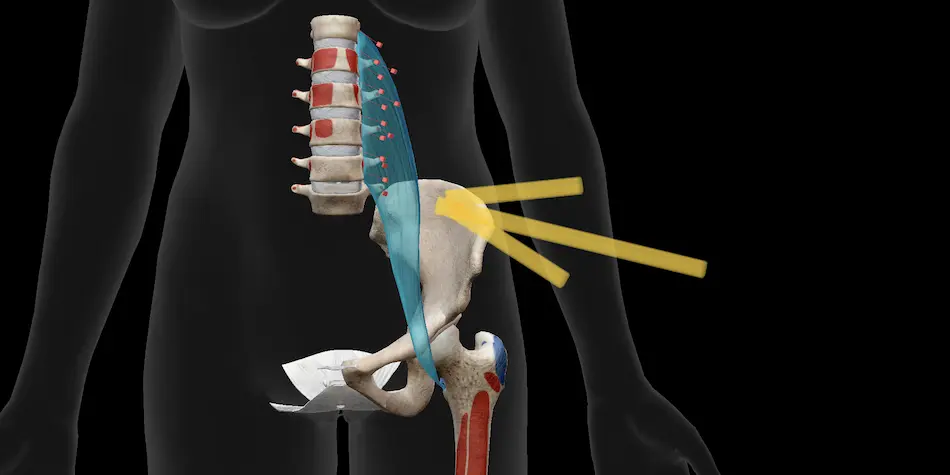
After using my peloton excessively, I noticed a slight tightness of the hip flexor muscles. Too much tension in the hip flexor muscles did contribute to hip pain and discomfort.
I noticed that some peloton classes often aggregate the problem even more. These include:
- HIIT and Tabata
- HIIT Cardio
- Climb rides
- Interval rides
- Bootcamp
- Running
On the contrary, other peloton classes helped me reduce tightness in my hip flexor muscles. These included:
- Yoga focus flow hips
- Foam rolling
- Glutes
- Lower body strength
I have hip arthritis
Another reason why people may experience hip pain during peloton rides is becasue of musculoskeletal conditions like hip arthritis or osteoarthritis.
Here’s the graph that illustrates hip arthritis.
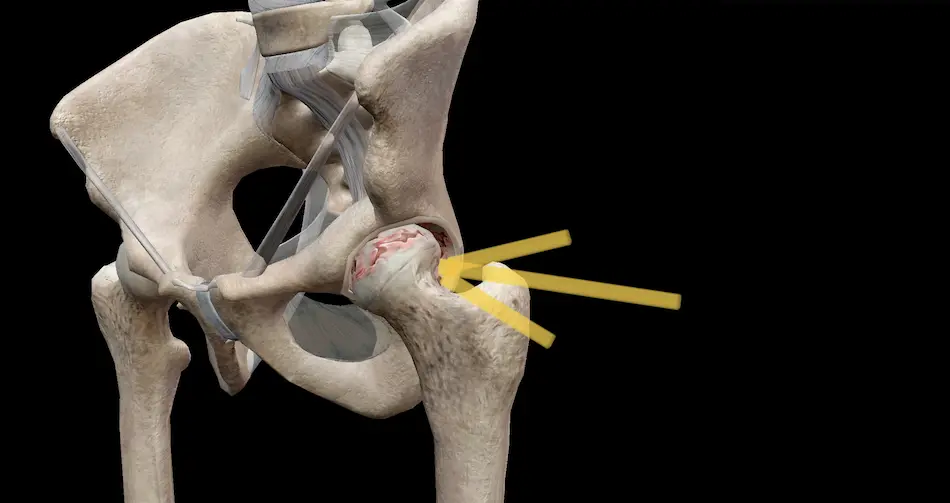
According to the article published in Current Rheumatology Reviews, “apart from surgery, there is no cure available for osteoarthritis and most common recommendations are pain management by a combination of aerobic exercise, strength training, and weight loss.”
Centers for Disease Control and Prevention guidelines state that “cycling is easy and joint-friendly exercise that can reduce the arthritis symptoms such as pain, stiffness, and fatigue, as long as it’s performed at a low to moderate intensity.”
This means that the peloton shouldn’t make arthritis worse because the bike puts minimal weight-bearing stress on the joints, reducing the risk of injury.
Peloton classes you should avoid with hip arthritis include:
- HIIT and Tabata
- HIIT Cardio
- Running
On the contrary, the best peloton classes that can help to reduce hip arthritis symptoms include:
- Low-impact rides
- Recovery rides
- Power zone endurance rides
- Yoga
- Walking
- Stretching
I have a hip bursitis
Another common reason for hip pain on a peloton bike can be hip bursitis.
Here’s how the hip bursitis looks.
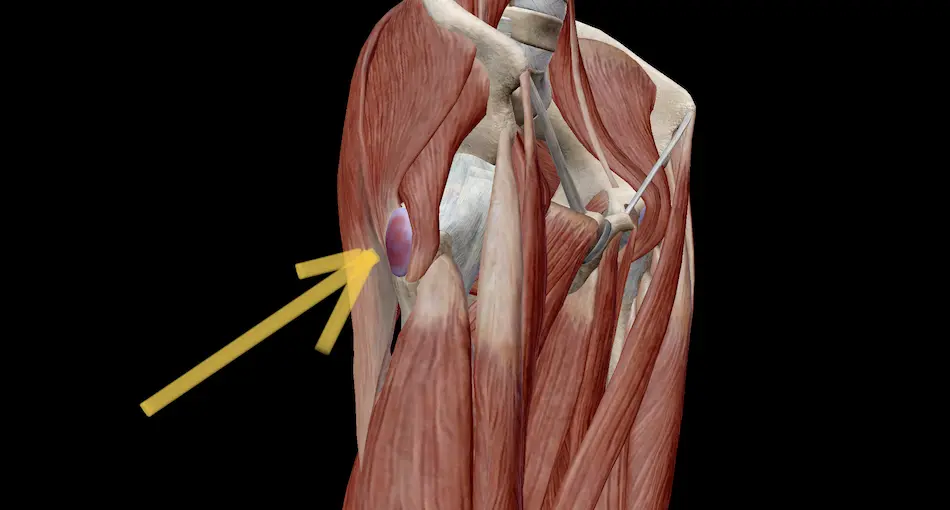
According to Aaron Seidman, DO, an author of the book Trochanteric Bursitis, “hip bursitis is an inflammation of the bursa, a fluid-filled sac that provides a gliding surface between the bones and helps to cushion your tendons, ligaments, and muscles.”
“Inflammation to the bursa can be due to repetitive training (e.g. running) with excessive stress on the hip, rheumatoid arthritis, or spinal problems (e.g. scoliosis),” explains Dr. Seidman.
Dr. Seidman says that “when the length (or intensity) of the physical activity increases suddenly combined with the bend-over position for an extended time, it can aggregate the pain.”
Peloton classes you should avoid with hip arthritis include:
- HIIT and Tabata
- Climb rides
- Interval rides
- HIIT Cardio
- Bootcamp
- Running
On the contrary, the best peloton classes that can help to reduce hip bursitis symptoms include:
- Stretching
- Foam rolling
- Yoga
Benefits of exercise for hip pain according to research
Jan D. Rompe, MD, from the OrthoTrauma Evaluation Center in Mainz, Germany has documented the efficacy of home-based exercises on 76 people with greater trochanter pain syndrome (GTPS) using the 6-point Likert scale.
The scale goes from 1 to 6, where 6 is extremely dissatisfied, and 1 is being extremely satisfied.
Here’s the graph that illustrates the results.
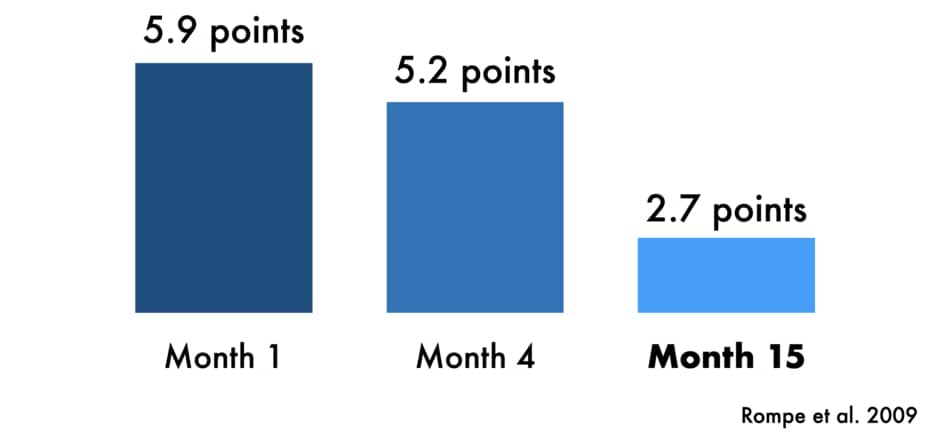
According to Dr. Rompe, the first four months after the baseline have shown minimal results (41% success rate with 5.2 points).
After the follow-up on the month fifteenth, the home-based training reached an 80% success rate with an average of 2.7 points.
According to the article published in The Journal of Rheumatology, 12 weeks of supervised cycling training and swimming (45 minutes sessions, three days per week at 60-70% of maximum heart rate) reduced hip joint pain by 40%, joint stiffness by 30%, and improved functional movements by 25%.
See the results below.
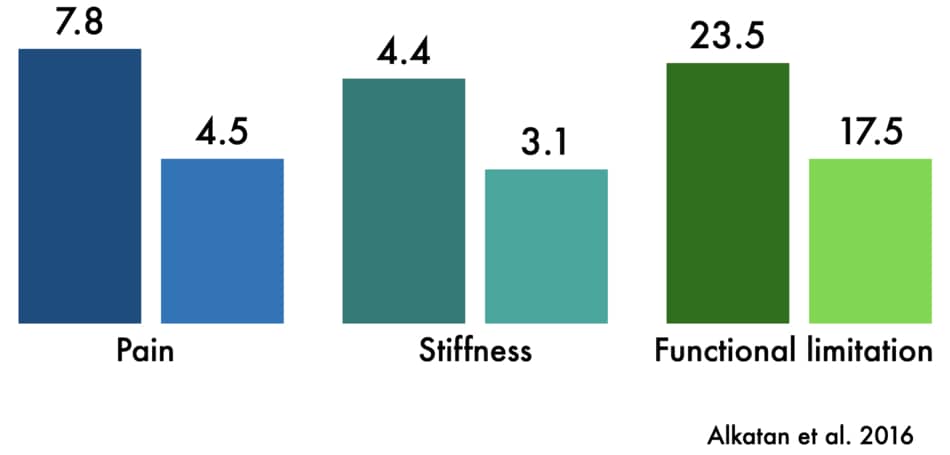
According to The Permanente Journal, “a professional fit of the bike helps to optimize hip joint function can allow people with hip pathology to exercise in comfort when alternative high impact exercise such as running may not be possible.”
“Conversely improper fit of the bike can lead to hip symptoms in otherwise healthy individuals who present with risk factors for hip pain,” states the journal.
How to use a peloton bike without hip pain?
Does your hip pain prevent you from riding the Peloton bike? These steps may help to alleviate some of the pain.
1. Set up your bike correctly
Here’s the video from Peloton on how to set up your bike.
2. Avoid longer classes
The peloton rides that are out of the saddle and take longer than 60 minutes can make hip pain worse because of the body’s position.
Riding a bike places most of the weight directly on the hip, which can increase the pain and worsen the symptoms.
3. Start with easier rides
If you choose to use the bike and you experience hip pain, a good rule of thumb is to take it easy and start from low-intensity classes like recovery rides that do not exceed 20 minutes.
If the problem continues, get a referral to see a physiotherapist and get a specific program designed for you.
4. Use ice or heat
Before your workouts, take a warm bath or shower. This may help prepare your muscles for exercise and reduce pain.
After your workouts, use ice cubes or a bag of frozen vegetables. Wrap them in a towel and apply cold on your hip area. I often do a cold shower immediately after my peloton rides.
5. Don’t skip warm-up
Adding dynamic stretching as a warm-up routine before the workout can help to reduce muscle tightness and stiffness, as well as increase the range of motion of the hips.
Don’t spend much time stretching before the rides because it can reduce overall muscle tension and lower performance by decreasing force production.
Start from a 5-minute peloton warm-up class, followed by 5 minutes lower body stretch routine.
6. Do more strengthening classes
Strengthening and stabilizing core exercises can help with pelvis and pelvic stability. The best peloton workouts for that include pilates and abs classes.
Peloton lower body strength classes are a great way to address muscle weakness, whereas the peloton yoga hip opener classes can reduce muscle tightness, as well as help to release the muscular trigger points.
7. Stay active out of the bike
Get more physical activity around your day, even when you are not on the bike. Light aerobic exercise, stretching, and simple bodyweight strength training are good places to start.
8. Take a rest
The peloton can increase your pain symptoms and make hip arthritis worse when overloaded via repetitive training loads.
The recommendations for low to moderate-intensity exercise for adults include at least 150 minutes (2 hours and 30 minutes) to 300 minutes (5 hours) a week, according to the CDC guidelines.
9. See a doctor
If you notice that you’re unable to move or bear weight on the affected leg, or you experience sudden swelling or intense pain in the hip, you should seek medical attention for your hip pain.
